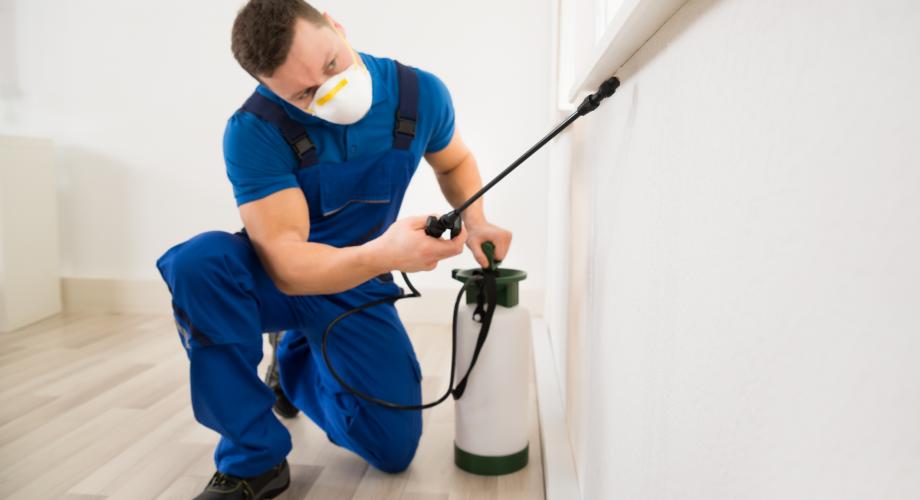An effective springtime routine can keep out unwanted pests.
As spring nears and residents start to head outside to enjoy the season, be wary of pests that want to travel inside. Spring is the perfect time for updating landscaping, renewing a sanitation routine and incorporating integrated pest management (IPM) into your property’s maintenance plans—all of which can help deter pests.
Apartments have one of the highest pest management demands of any industry because of the large base of residents with different lifestyles and sanitation habits. The frequent arrival of new residents and their guests can also increase the chance for pest introductions at a community. Once introduced, pest problems in apartment buildings can be difficult to pinpoint and control because of shared walls and floors, allowing pests to spread rapidly.
To prevent issues, it’s important to make sure staff—and ideally residents— are on the same page when it comes to managing pests. Consider distributing e-blasts or posting bulletins with seasonal pest control tips as well as information about any pest-related incidents to keep residents aware of their role in pest control and encourage them to do their part.
Another effective measure is regular training for onsite associates, including leasing personnel and maintenance staff, to help them understand how to spot an issue so it can be treated quickly. Treating a problem early on prevents infestation.
Establishing protocols for staff and residents to report pest sightings is also an important component of successful pest management in the multifamily housing setting. Orkin customer Loetta Lewis, Community Manager with First Communities, an apartment management company based in Atlanta, has her staff document each pest incident and then notifies their pest specialist for further evaluation.
Property managers and their teams have the responsibility to treat their properties with care, especially to keep them pest-free. Here are some recommended actions for springtime to help make sure pests don’t become the next resident.
Sanitation Routine
While a deep clean is synonymous with the season, integrating these cleaning tips into a regular sanitation routine will help prevent pest infestations year round.
- Clean communal areas daily. Hallways, fitness centers, laundry rooms and community entertainment facilities need to be thoroughly cleaned and inspected. Pests such as ants, flies, cockroaches and rodents are attracted to the food, water and shelter these places can provide. Dust and vacuum these areas regularly and remove food debris.
- Pay attention to dryer vents. Not only is lint buildup in dryer ducts a fire hazard, but they can easily become home to a variety of wildlife, such as rodents and birds. Inspect the exterior vent and clean dirt, leaves and excess lint out of the exhaust. Consider installing a dryer vent bird guard and replacing the outside vent cover each year.
- Seal trashcans and Dumpsters. Encourage residents to take out their trash on a daily basis. Provide them with trashcans that seal or Dumpsters with latching lids and side doors. The CDC defines trashcans as rodent proof only if there is less than ¼ inch between the container and the lid. Clean the trashcans weekly with detergent and hot water and ensure that the Dumpster is cleaned by the contractor on a frequent basis.
Landscaping Tips
A beautiful landscape can bolster curb appeal, but it can also be a safe haven for pests.
- Plan ahead. Elements of your landscaping can be conducive to pests. Before planting, work with a pest management provider to identify plants and other landscaping features that can attract or harbor pests. First Communities manages 30,000 units at more than 150 properties, many of which feature multiple garden areas. They have found that proper planning before the season change can reduce pest, such as ants, year-round.
- Create a barrier between landscaping and building exteriors. Consider trimming vegetation back away from the building exterior and installing a three-foot gravel strip between plantings and the building exterior to obstruct crawling pests from reaching the walls and entrances. When laying pine straw, use the same logic. First Communities saw reduced pest pressure after pushing pine straw back at least one foot from all patios and buildings. If using mulch, consider cedar mulch, which has been proven to be a pest repellant.
- Eliminate standing water. Spring showers can cause excessive moisture and stagnant water on a property, which pests such as gnats, mosquitos and roaches need to thrive and breed. Help prevent excess moisture by cleaning gutters regularly, covering outdoor trashcans to keep water out, and dumping standing water out of saucers under planters and other containers. Also be sure to immediately fix leaky pipes and avoid overwatering plants.
Spring time is the perfect motivator for refreshing pest control needs. Integrating the tips provided above as part of an IPM program and keeping the property well maintained will help attract renters, not pests.
Patrick Copps is Technical Services Manager for Orkin’s Pacific Division
